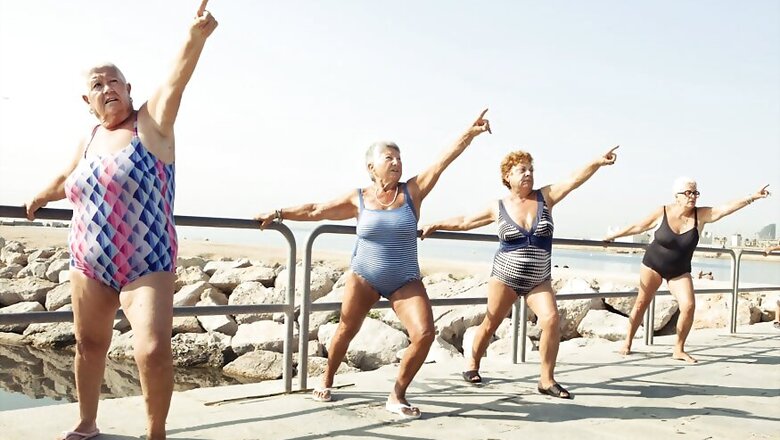
views
New US research has found that older women who do more physical activity, and at higher intensities, could reduce their risk of death from any cause by as much as 70 percent.
Carried out by a team from Harvard University's medical and public health schools, the large-scale study looked at more 17,700 women with average age 72 between 2011 to 2015.
The team chose to look at the levels of physical activity in an older age group as current research is lacking for this population, with the study's first author I-Min Lee explaining that, "Younger people in their 20s and 30s generally can participate in vigorous intensity activities, such as running or playing basketball. But for older people, vigorous intensity activity may be impossible, and moderate intensity activity may not even be achievable. So, we were interested in studying potential health benefits associated with light intensity activities that most older people can do."
The study is also among one of the first to look at the effect of physical activity on health by using a wearable device called a triaxial accelerometer, which is capable of measuring activity along three planes: up and down, front to back and side to side. This increases the device's sensitivity to physical activity and allows for more precise measurements.
The women were asked to wear this device for seven days when awake, with data gathered from 16,741 of the women who wore their devices for at least 10 hours a day, on at least four days.
During the two-and-a-half-year follow-up, the team found that more moderate to vigorous intensity physical activity, such as brisk walking, was associated with roughly a 60 percent to 70 percent lower risk of death at the end of the study among the most active women compared to the least active.
Previous studies have found a 20 percent to 30 percent lower death rate amongst active people when compared to their less active counterparts, however these findings have used self-reporting which can be prone to errors.
Sedentary behavior and more light intensity activity, such as housework and slow walking -- for example window shopping in a mall -- was not independently associated with a reduced risk of death, however the team stressed that light intensity activity may be beneficial for other health outcomes not studied in this research.
The current findings also support 2008 federal guidelines, with the American Heart Association suggesting at least 150 minutes a week of moderate intensity or 75 minutes a week of vigorous-intensity aerobic physical activity (or a combination of the two) and muscle-strengthening exercises two or more days a week.
The results can be found published online in the American Heart Association's journal Circulation.


















Comments
0 comment